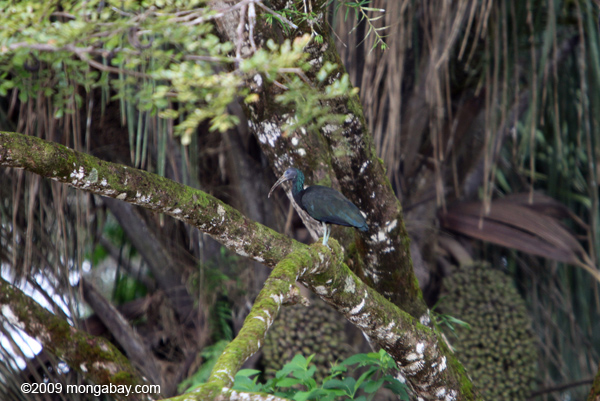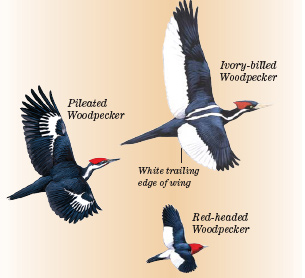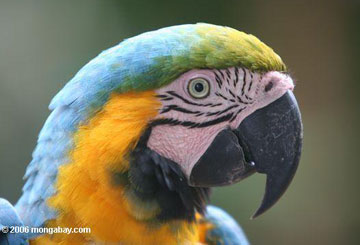Researchers have discovered that the thick wing bones of an ancient flightless bird which once lived in Jamaica may have been used as clubs to beat predators and even members of its own species.
A member of the ibis family, /i> are described in the paper as “grotesquely inflated”, with thick walls. Their “finger” bones, or phalanges, are “block-like”. Their radii (arms) are substantially enlarged.
 X. xympithecus was related to this green ibis. Photo taken in Costa Rica by Rhett A. Butler |
The adaptions add up to be a formidable weapon, with the capacity for use as a highly effective “jointed club or flail”, say the researchers in their study. They believe that the “clubs” were not only used as anti-predator devices, but to fight with each other as well due to the presence of fractures present on some of the bones which they believe were sustained from fights with other ibises.
“…we analysed two bones that had been broken during fighting, including a humerus (upper arm bone) that had been snapped in half – it had started to re-heal, although the two ends hadn’t knitted together,” Dr. Nicholas Longrich, co-author of the study, told BBC News.
Many bird species use their wings to protect themselves and their nests from predators and conspecifics. The wings of many duck, geese, and swan species bear a bony knob that is used to flail enemies. An extinct solitaire which lived on the Indian Ocean island of Rodrigues had bony growths known as “musketballs” on their wings, with which they could inflict a powerful blow.
“But among vertebrates – there’s no animal of any sort that has anything like a limb modified as a club,” said Dr. Longrich to the BBC.
Related articles
U.S. to spend $27M on possibly extinct bird

(08/26/2007) The U.S. government plans to spend $27 million on the recovery efforts for a bird species that may already be extinct, reports the Associated Press.’
10-20% of birds extinct by 2100 due to global warming, deforestation

(06/04/2007) Ten to twenty percent of the world’s terrestrial bird species could be threatened with extinction by 2100 due to climate change and habitat destruction reports a study published in the June 5 issue of the journal PLoS Biology. The numbers are in line with estimates published last year in The Proceedings of the National Academy of Sciences.